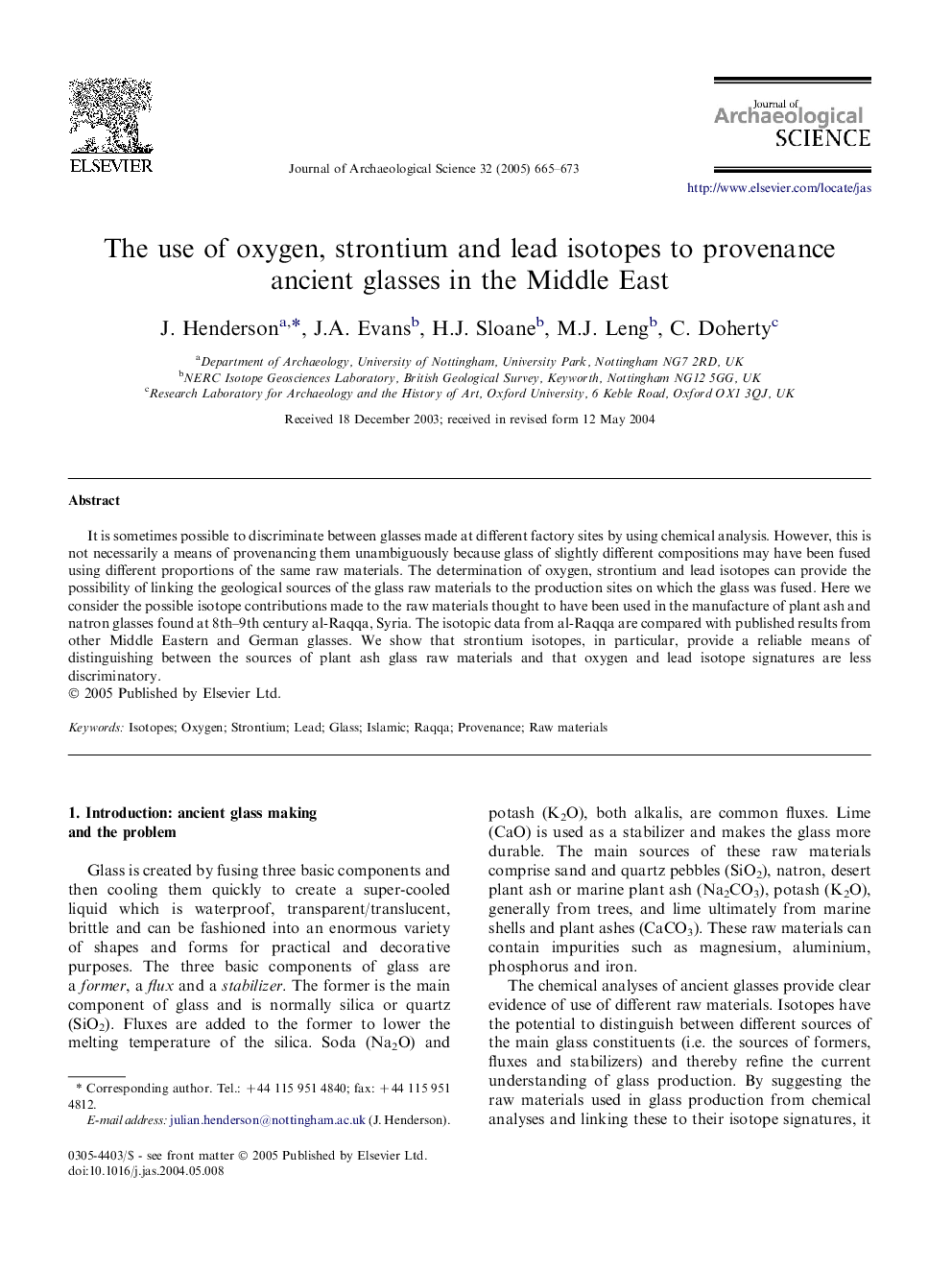| Article ID | Journal | Published Year | Pages | File Type |
|---|---|---|---|---|
| 10499469 | Journal of Archaeological Science | 2005 | 9 Pages |
Abstract
It is sometimes possible to discriminate between glasses made at different factory sites by using chemical analysis. However, this is not necessarily a means of provenancing them unambiguously because glass of slightly different compositions may have been fused using different proportions of the same raw materials. The determination of oxygen, strontium and lead isotopes can provide the possibility of linking the geological sources of the glass raw materials to the production sites on which the glass was fused. Here we consider the possible isotope contributions made to the raw materials thought to have been used in the manufacture of plant ash and natron glasses found at 8th-9th century al-Raqqa, Syria. The isotopic data from al-Raqqa are compared with published results from other Middle Eastern and German glasses. We show that strontium isotopes, in particular, provide a reliable means of distinguishing between the sources of plant ash glass raw materials and that oxygen and lead isotope signatures are less discriminatory.
Related Topics
Physical Sciences and Engineering
Materials Science
Materials Science (General)
Authors
J. Henderson, J.A. Evans, H.J. Sloane, M.J. Leng, C. Doherty,
